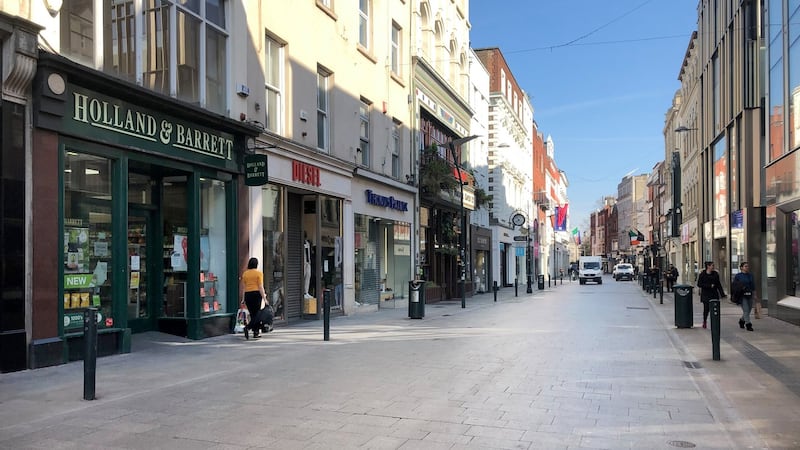Consumer spending on clothes in physical shops increased by more than 1,440 per cent per cent in May compared to the previous month, while multiple other sectors also recorded massive jumps in activity as Ireland moved out of lockdown and people raced to the country's shops and hairdressers.
With people allowed to leave their homes for non-essential reasons for the first time this year, spending on clothes and grooming climbed sharply, according to new data published by AIB.
All told, Irish consumers spent 50 per cent more on clothes in May when compared to the previous month, while spending on health and beauty – a category that includes hairdressers – climbed by 14 per cent.
However, in-store spending on clothing was up by 1,443 per cent on April. It was down 17 per cent online, with e-commerce spending falling by 3 per cent in May.
The latest AIB Spend Trend report also pointed to a 30 per cent increase in spending in homeware stores.
The Government’s May guidance on the proposed easing of hospitality and travel restrictions resulted in big increases in spending on travel, with airlines seeing a 132 per cent lift.
The amounts being spent on hotels climbed by 67 per cent while restaurants saw a 10 per cent increase in spending, as consumers had more clarity on when travel might be allowed.
It was a somewhat different story when it came to spending in stores that had remained open throughout the pandemic. The sums spent on electronics fell 4 per cent, while spending on hardware fell by 2 per cent, as did spending on groceries, as people chose to spend their money elsewhere.
Physical card payments
Although e-commerce was down, physical card payments were up, with digital wallet payments climbing 18 per cent, contactless up 9 per cent and chip and pin up 12 per cent, indicating that more consumers were out and about and happy to spend.
Overall, consumer spending during the month of May was up 6 per cent on April, but transaction levels are still down on pre-pandemic levels.

The AIB Spend Trend features data compiled from AIB debit and credit card spending from more than seven million transactions between the May 1st and 31st, 2021.
To account for the difference in the number of days in each month the AIB Spend Trend looks at average daily spend instead of total monthly spend, providing an accurate reflection of consumer spending habits.
The research also looked at spending regionally. Carlow consumers recorded the biggest increase in spending on clothes, while people from Longford recorded the biggest increase in spending on homewares and restaurants. Offaly consumers recorded the largest increase in hotel spending in May, while Kerry recorded the lowest increase in hotel spending over the same period.
"After months of restrictions resulting in businesses being closed, it's encouraging to see these impacted sectors record double-digit increases in spending, releasing some of the pent-up demand which has been evident through the pandemic," said AIB's Rachel Naughton.
“It’s also interesting to see the switch away from e-commerce during May, which is down 3 per cent, as many businesses reopened and consumers chose to spend their money in store rather than online.”










